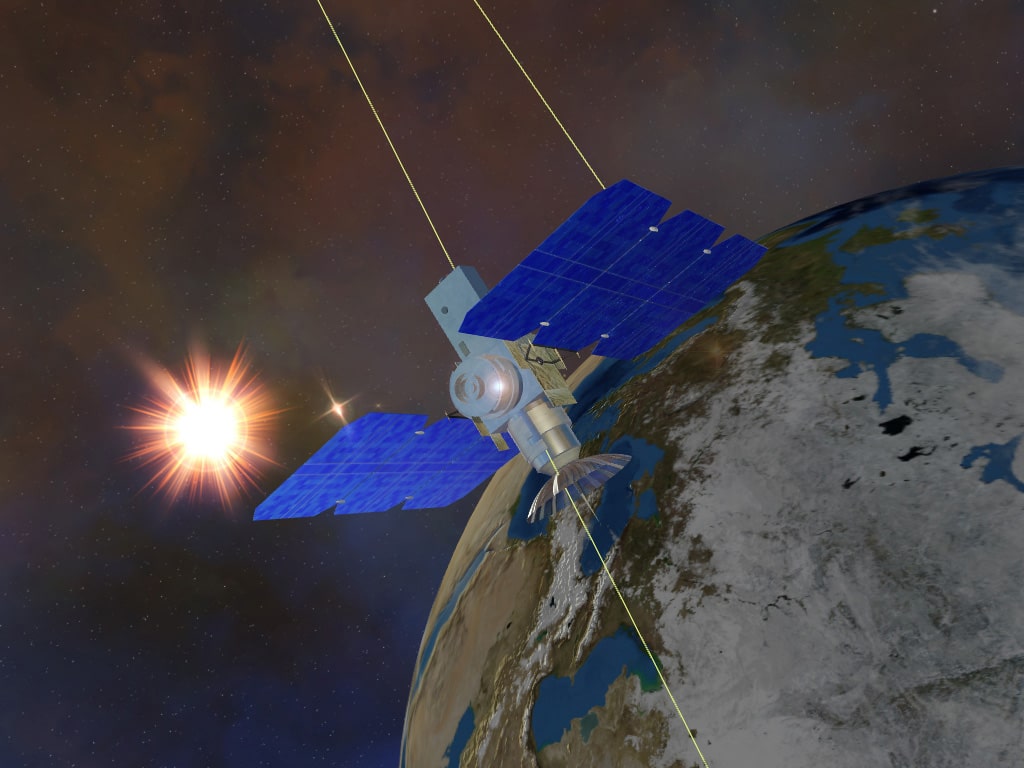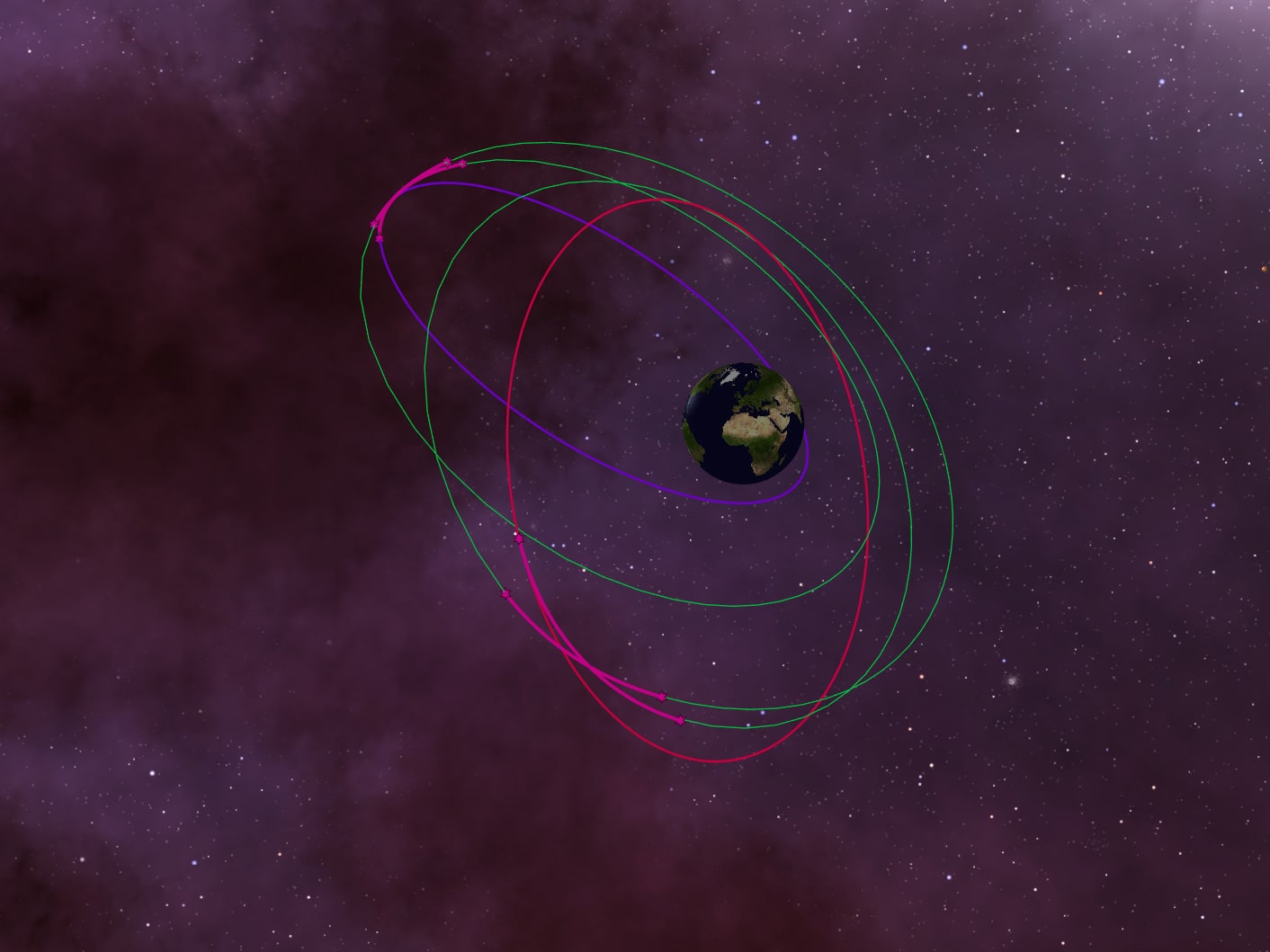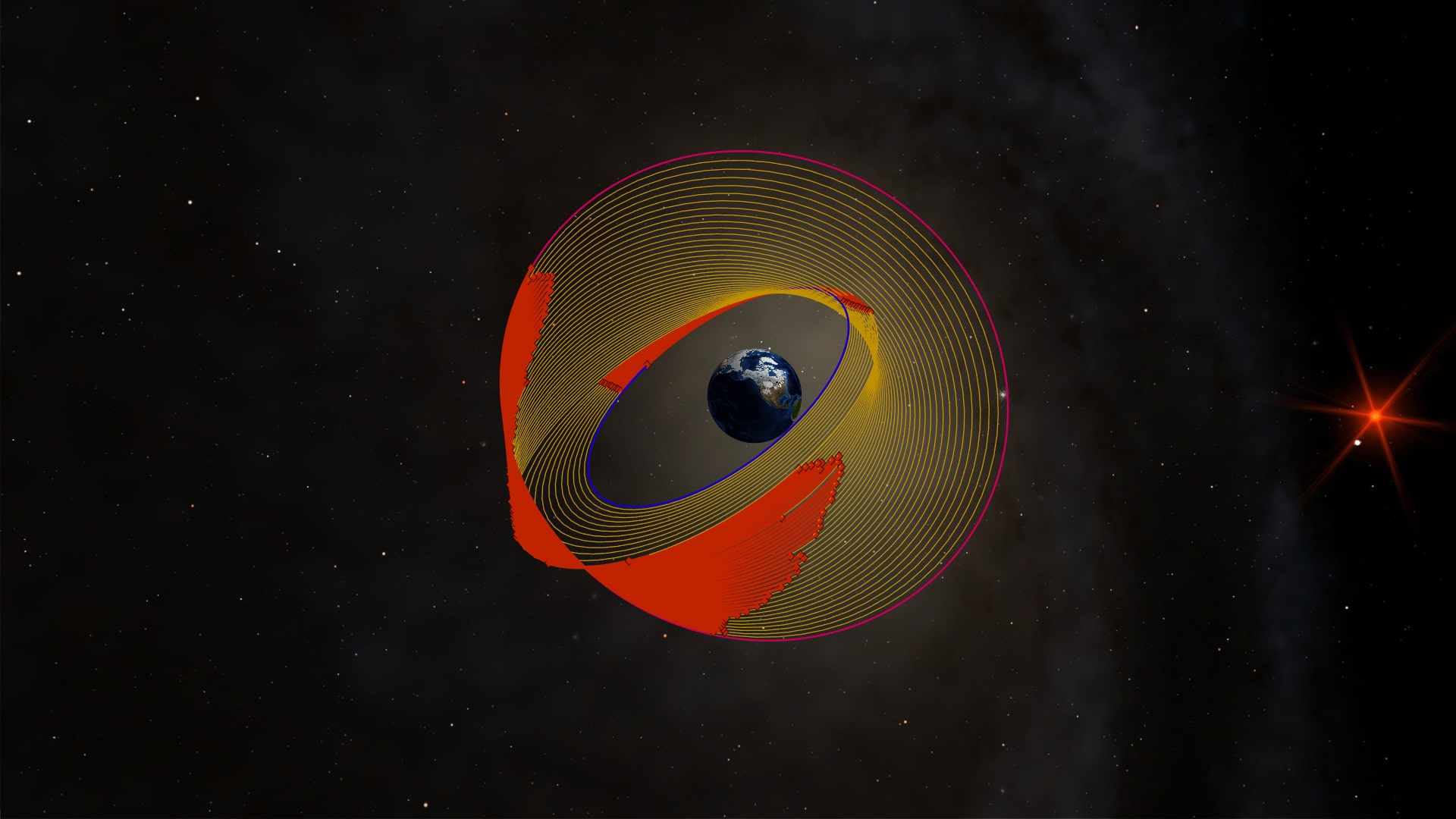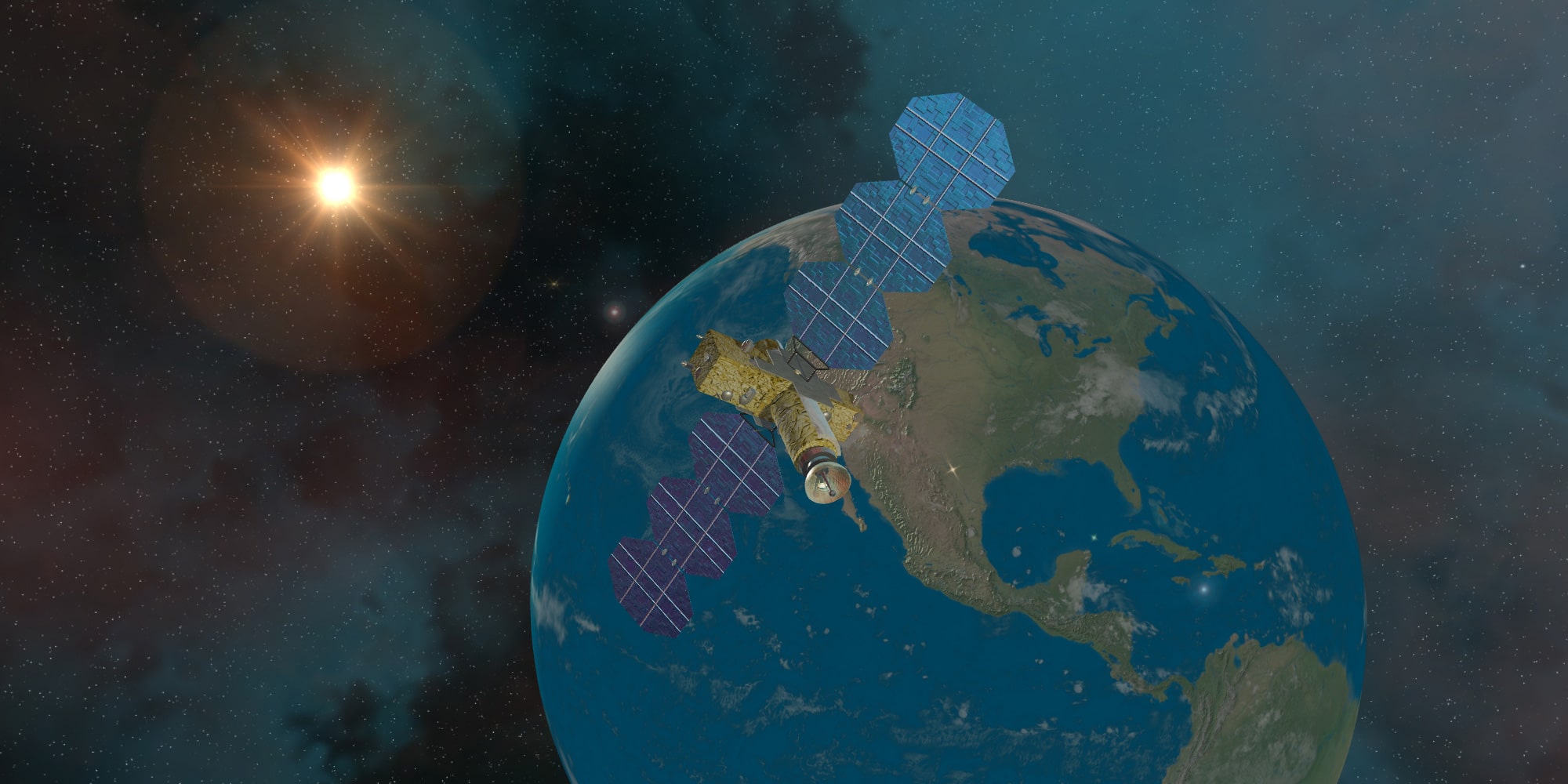
Evolutionary algorithms (EAs) represent optimization methodologies aimed at locating the optimal solution within a defined search space, either maximizing or minimizing a specified function. Each solution, or individual, is delineated by integer or real values assigned to a finite set of variables, with these values capable of varying within predetermined intervals. The initiation of the optimization process involves generating an initial population of individuals, typically in a randomized manner. Distinct rules govern the evolution of the population within each algorithm, promoting enhancements in the optimized function. Specific parameters intrinsic to each algorithm dictate the evolutionary trajectory and influence the ability to identify the optimal solution. Among the most renowned EAs are Genetic Algorithms (GAs), Differential Evolution (DE), and Particle Swarm Optimization (PSO).
Orbital Maneuvers with Evolutionary algorithms
EAs are stochastic in nature, meaning that the outcome often varies with each iteration of the optimization process. The efficacy of these algorithms is typically assessed based on their efficiency, which refers to the likelihood of successfully identifying the global optimum. This evaluation holds greater significance compared to traditional metrics such as the best or average results and standard deviation commonly examined in existing literature on trajectory optimization, as well as computational effort, which measures the average number of function evaluations necessary to achieve the optimum solution.

Early applications of EAs in space trajectory optimization primarily utilized GAs alongside gradient-based techniques. GAs have additionally been paired with calculus of variations to address low thrust trajectory challenges. Furthermore, in a separate study, the integration of artificial neural networks with EAs has been explored for solar sail trajectories. Notably, GAs have found intriguing application in hybrid optimization problems, which involve both continuous and categorical variables, often in conjunction with complementary techniques.
EAs demonstrate greater efficacy in optimizing impulsive trajectories, characterized by a limited number of variables. In such scenarios, the requisite number of function evaluations to achieve the optimal solution is generally deemed acceptable. Conversely, the complexity arising from the numerous variables essential for accurately describing low-thrust trajectories diminishes the attractiveness of employing EAs for such problems. Recent literature has seen several studies focusing on optimizing impulsive interplanetary trajectories with gravity assists through EAs. These studies explore fine-tuning algorithm parameters to enhance convergence and compare algorithm performance. Overall, there is a consensus among these studies regarding the suitability of EAs for optimizing such missions. However, discrepancies may arise in determining the optimal method due to variations in algorithm parameter choices. Additionally, comparing results is sometimes challenging due to insufficient details regarding the trajectory modeling process.

Hybrid Algorithms
Hybrid evolutionary algorithms employ a cooperative approach by integrating different algorithms and executing them simultaneously, with the top-performing individuals transferring between populations at designated intervals. These techniques offer significant advantages for various complex space missions, including rendezvous challenges and Earth-Mars round-trip missions. Recent research indicates superior performance of hybrid algorithms compared to their basic counterparts. While basic algorithms may achieve 100% efficiency in specific rendezvous scenarios with certain strategies and parameter configurations, the hybrid algorithm consistently reaches the global optimum, even under non-optimal settings. Moreover, the hybrid algorithm reduces the number of required function evaluations to reach the optimum. In Earth-Mars missions, the hybrid algorithm has demonstrated successful application in identifying mission opportunities within expansive search spaces.
Parameter Tuning in Hybrid Algorithms
Parameter tuning proves beneficial when it exhibits general effectiveness across various problems, ensuring optimal algorithm performance. However, there's no assurance that a specific parameter setting will effectively address a new problem. In contrast, within a hybrid evolutionary algorithm, the reliance on parameter tuning diminishes. Hybrid EAs amalgamate basic EAs synergistically, enhancing the likelihood of achieving favorable outcomes across diverse problems without specific parameter adjustments. Only the population size and number of function evaluations need adjustment to accommodate problem dimensions (i.e., optimization variables). The synchronous island model exemplifies a well-known implementation of hybrid optimization, wherein three distinct optimizers (e.g., GA, DE, and PSO) operate concurrently. Each optimizer operates on its own population, with the best individuals migrating between populations at predetermined intervals. Although the synergistic use of different EAs has been proposed for space trajectory optimization in some studies, an 'in series' arrangement poses limitations when addressing new problems without known parameter tuning. Novel methods introduce a 'mass mutation' (MM) operator to overcome this limitation. This operator eliminates a significant portion of individuals (typically over 90%) when the mean distance between individuals falls below a specified threshold and the optimal objective function remains stagnant for a predetermined number of iterations. This re-initialization process aids in preventing convergence to suboptimal solutions compared to existing methods.

Conclusion
In a hybrid EA, information exchange occurs among basic algorithms, which operate concurrently in accordance with the island model, enabling the transfer of the top individuals to other algorithms at designated intervals. Even under non-optimal settings, the hybrid algorithm demonstrates superior efficiency compared to basic algorithms, making it a feasible approach for addressing new problems when optimal parameter settings are unknown. Recent studies highlight the advantages of incorporating Bramlette's random initialization procedure to generate strong individuals within the initial population. Furthermore, the introduction of mass mutation proves particularly beneficial, facilitating escape from locally optimal solutions.
Utilizing the hybrid algorithm to address interplanetary trajectories involving gravity assist and deep-space impulses, which often exhibit close minima, has consistently demonstrated notable efficiency in identifying the correct global minimum. Even when exploring expansive search spaces, the algorithm typically delivers reliable results with just a few runs (and minimal time, typically mere minutes on a standard PC), affirming its efficacy as a valuable tool for conducting preliminary analyses of intricate interplanetary trajectories and facilitating mission planning.
References
-
Heurestic Optimization-Based Trajectory Optimization
Runqi Chai, Kaiyuan Chen, Lingguo Cui, Senchun Chai, Gokhan Inalhan, Antonios Tsourdos
Advanced Trajectory Optimization, Guidance and Control Strategies for Aerospace Vehicles (2023)
-
A hybrid optimisation method for intercepting satellite trajectory based on differential game
W. Wu, J. Chen, J. Liu
The Aeronautical Journal (2023)
-
Hybridizing Differential Evolution and Particle Swarm Optimization to Design Powerful Optimizers: A Review and Taxonomy
Bin Xin, Jie Chen, Juan Zhang, Hao Fang, Zhi-Hong Peng
IEEE Transactions on Systems, Man, and Cybernetics, Part C (Applications and Reviews) (2012)
-
Cooperative evolutionary algorithm for space trajectory optimization
Matteo Rosa Sentinella, Lorenzo Casalino
Celestial Mechanics and Dynamical Astronomy (2009)




